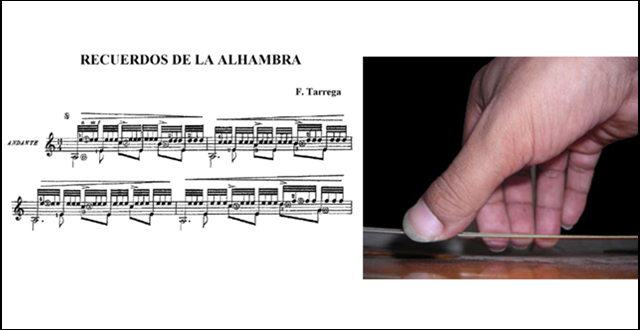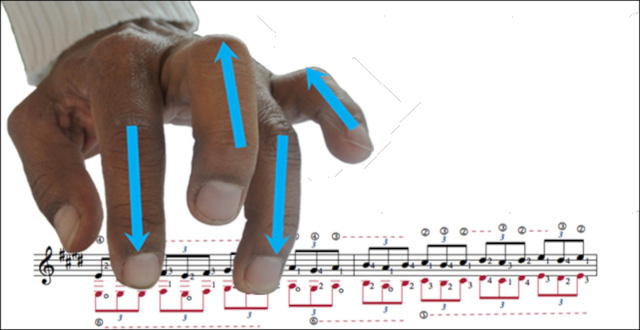
Left-Hand Contrary Motion with Double octave scale - improving left hand finger-independence.
New approach for finger-independence through Octave scales.
Finger-independence is maybe one of the most complicated
issues in classical guitar, since there has not been a clear
developed method for it.
Scott Tennant a few other performers have addressed this
issue with some exercises. In his book “Pumping Nylon” Scott
Tennant shows the importance of finger independence and
offers some exercises for it.
Abel Carlevaro also has developed a great number of formulas for both hands, but it lacks on the concept of independence. His formulas will be used in my book, since I believe that Carleravo was on the right track. I modified the application itself and put his formulas in the prospective of my concept of “Staccatto exercises for the right hand finger-independence training”.
I am certain that there are more guitar pedagogues in our century that have recognized the important of this issue. But this is more the arguments for the right hand training; here we will be talking about left hand independence training.
A very important point in my concept is the we have to practice the guitar technique ALWAYS with sound. It became quiet common to practice left-hand technique in a “dry” manner; this means just as a mechanical movement without sound – just moving the fingers over the strings.
This leads that several aspects of music are not being addressed -such as nuance, dynamic, sound-projection and others. With the same mentality that Franz Liszt applies for his piano pedagogy (Technical Studies #1-12), we have to practice technique preparing our hands for the situations we will encounter later on in the repertoire. Technique practice should always involve the use of the “intelligence” (Imre Mez?, “Liszt in: Technical Studies I, 2.”), in all possible ways in order to prepare us for the problems that will ecnounter in the repertoire – this means always with sound.
Contrary motion is nothing new. I spend several years studying different pedagogical approaches of other instruments, like violin and piano; studying with the help of pianist and violinists friends.
The piano has always impressed me. Piano players have an absolute control over the hand and the fingers, and they don’t use excuses for the deficiency of the little finger or the ring finger.
Franz Liszt has developed an important series of exercises that influenced nearly every piano teacher and performer. Before him his teacher Czerney and even Czerneys teacher Beethoven have worked on technical concepts for piano pedagogy.
After analyzing Franz Liszt books “Technical Studies” and his exercises, I realized that the piano has of course an own way of challenging the hands - because of the nature of the keyboard in relationship to the hand.
Lifting the finger preparing, shifting and pressing the next key, is defined by Liszt as “Principal of vertical and horizontal Motion” (Neil J. Goodchild, “Liszt’s Technical Studies: A Methodology for the Attainment of Pianistic Virtuosity”, University of New South Wales, 2007).
This is the key element that needed a more physical/medical attention. It was important to first analyze what happens inside the hand and how it leads to technical improvement. This led to a “basic common concept” with which I could develop exercises for the guitar. It is important to understand how tensor muscles, extensor muscles and tendons are working together in contrary motion. Contrary motion is the common idea that stays in the center of my exercises.
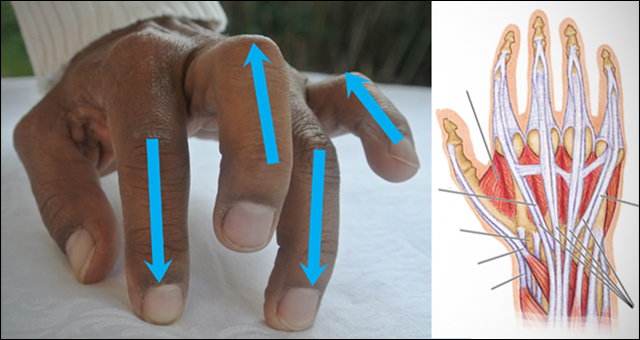
The tendons that are involved for the movements of the fingers and all the muscles supporting the motion are being trained in order to achieve independence. For contrary motion you could also say: the fingers are moving against each other. It means while one finger moves in one direction the other moves in the contrary direction. This concept allows for a high level of independence between the fingers. For the pianist it has one additional parameter: Strength is needed to press the keys down, and in the same time another finger is moving in contrary direction upwards. This makes the finger training even more effective.
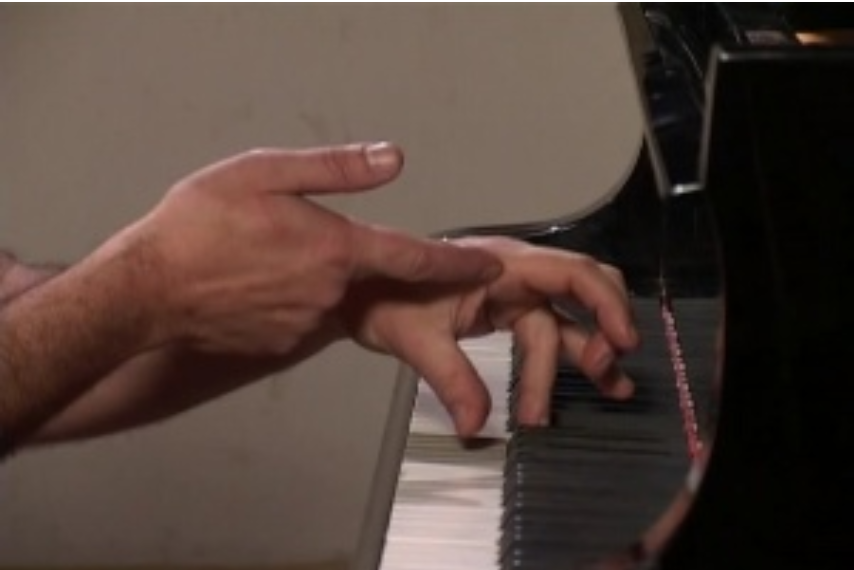
Franz Liszt uses an exercise that is called “double thirds”. He opposes the index and ring finger against the thumb and middle finger and also the little finger with the middle finger. Translating this idea to the guitar it would mean that we need to train fingers 1-3 against 2-4 on the left hand, and p-m, i-a and m-e on the right hand. Through time many other pedagogues have developed other exercises but based on the same concept of Franz Liszt - and others.
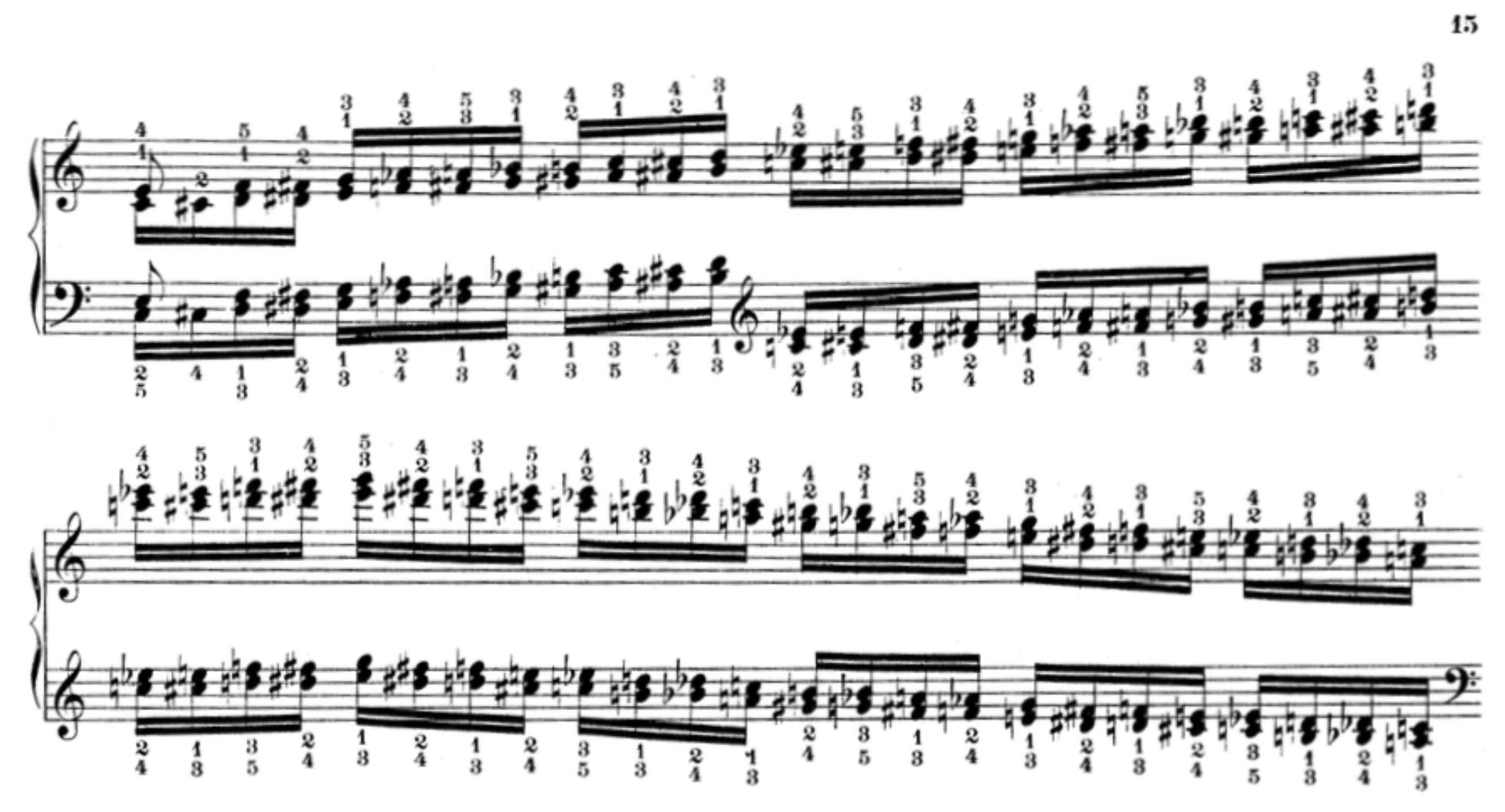
The above score is an excerpt of Franz Liszt “double
thirds” exercise. (Franz Liszt, “Technische Studien“, J.
Schuberth&Co, Leipzig - 1886).
I recommend you to watch on YouTube different videos on
Double Thirds for piano.
Once we understand the mechanical purpose of this concept, then we realize the incredible advantage of this type of exercises.
I spend several months analyzing the hands mechanics and translating the muscle and tendons motion from piano onto the guitar. Of course we cannot just use the piano score and try to execute them on the guitar; the key element is the mechanical concept of contrary motion and applying it to the guitar. Thus I developed a series of exercises based on scales - but also as chromatic mechanical exercises.
Technical exercises must prepare us for any situation within the repertoire, this is a reason why “dry” exercises based only on movement of the fingers are not the best way to train our fingers. Sound is crucial so that we also train our attack-control and also it is very important that our intellect has to be always involved challenged during our practice routine.
You should of course still practice your standard scale exercises and expand your training routine with this new scales.
This is of course not the only exercises that leads to a
higher ability of independence for our fingers. It is
necessary to work with a variety of exercises ; which I have
worked on for several years, in order to achieve a high
level of finger-independence. I have a series of exercises
for the young student working upwards into more difficult
exercises.
Octave Scale for classical guitar:
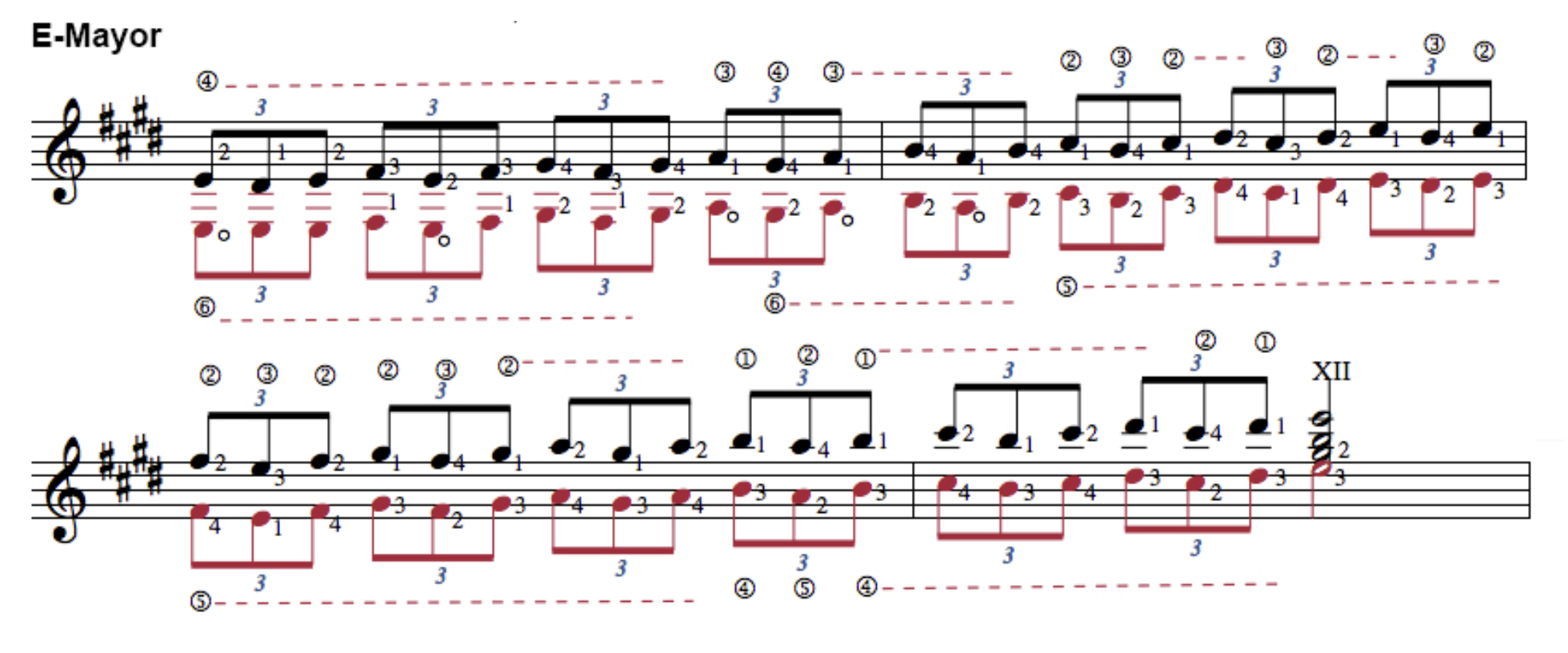
In this octave scale in E-Mayor you can observe the contrary motion of the fingers 1-3 against 2-4. The first triple group repeats the low “E” note because of obvious reasons on the guitar.
As you can see the octave scale is not being performed straight through, but the repeating pattern in each triple group creates the needed challenge for the contrary motion technique.
In order to achieve the best results you have to practice with higher pressure when pressing down the active fingers, but when lifting up the passive fingers and getting ready for the change of position, you have to lift them as high as possible, this at first - later we will change the motion of the passive fingers. The return back to the first position has a different fingering and is more challenging.
Also very important is that you keep the pressed fingers as long as possible down, creating a slight “legatto” effect. This makes it more difficult at first, since two fingers have to prepare and change position while two other are still active, pressing down the string. Try not to have all four fingers in the air, always only the fingers that need to prepare the next note-position; the active fingers stay down as long as possible. Once you learn the notes and feel secure executing the scale, then you have to practice with different rhythm variations.
In general we are introducing two types of motions for our
left-hand finger training: Vertical motion, up and down the
string and the horizontal motion parallel position change
over the strings - which is actually based on Franz Liszt
principle of vertical and horizontal motion. This will
became natural when we practice other more advanced
exercises.
As you maybe realized we are talking about active and
passive fingers. This a concept that will help us to
understand more about the preparation and anticipation of
the two motions of our fingers. For this a will dedicate a
separate article.
Thanks for reading.
Have fun practicing and do not over-stress your hand; start
slowly and gentle.
